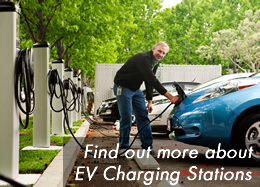Save Energy
How You Can Save Energy
It’s hard to imagine life without electricity. In our homes, we rely on it to power our lights, appliances, and electronics. Many of us also use electricity to provide our homes with hot water, heat, and air conditioning. There are many ways you can use less electricity right now!
What you can do
- Set your home’s thermostat a few degrees lower. For each one-degree change, your family can save up to 5 percent on your home’s heating and cooling costs!
- Turn off lights and all electronics (like computers, televisions, stereos, and video-games) when you leave a room.
- Use the microwave instead of the oven for cooking your meals.
- Use machines like washers, dryers, and dishwashers after 8 p.m.
- Open your blinds or curtains on sunny winter days to let the sun shine into your home.
- Save hot water by taking short showers instead of baths.
- Turn off the water while you brush your teeth.
- Occasionally hold a ribbon up to the edges of your home’s windows. If air is leaking into, or out of, the house, the ribbon will move. If you find a leak, let someone in your family know so they can fix it.
What your family can do
Buying new appliances? Look for the ENERGY STAR® label when replacing large or small appliances. Click here to learn more.
You can set up a rain barrel to collect the water that runs off your roof and use it water the lawn or wash the car. Find out why rain barrels are such a good idea.
What your community can do
U.S. Green Building Council
The Green Building Council helps builders and governments learn about how to make buildings that use less energy and are friendly to the environment.
Cool Cities
The Cool Cities campaign helps city residents and leaders learn how their city can save energy, reduce air pollution, and fight global warming.
Solar America Cities
Solar America Cities are chosen for their commitment to increased use of solar technologies in their homes and businesses. Each cities’ solar projects further President Bush’s Solar America Initiative, which aims to make solar electricity less costly by 2015. There are 12 solar cities for 2008 and one of those is Knoxville, Tennessee. The city plans to use the money to install solar panels in its new bus station and to build a net-zero energy home.
LED Lighting
Many towns and cities are saving money on their power bills by changing from incandescent light bulbs to light-emitting diode (LED) lights. These lights can be used in traffic signals, crosswalk signs, and even holiday displays.
LED lights have an extremely long life span and use much less energy than incandescent bulbs. Switching to LED lighting can save 40 to 70 percent of the electricity a city uses for certain lights in parking garages, parking lots, outdoor parks, and on streets.
The cities of Raleigh, North Carolina, and Ann Arbor, Michigan, are taking part in LED City, a program designed to help cities use LED lighting to save energy, protect the environment, and lower costs. Find out how your city can become an LED City.
The ball that drops in Times Square on New Year’s Eve in New York City was recently changed over to LED lighting. The 9,576 LED lights replaced the 600 incandescent bulbs used in the previous ball. The new ball is more than twice as bright as the old one, but it uses only as much energy as a regular-size stove or oven.









